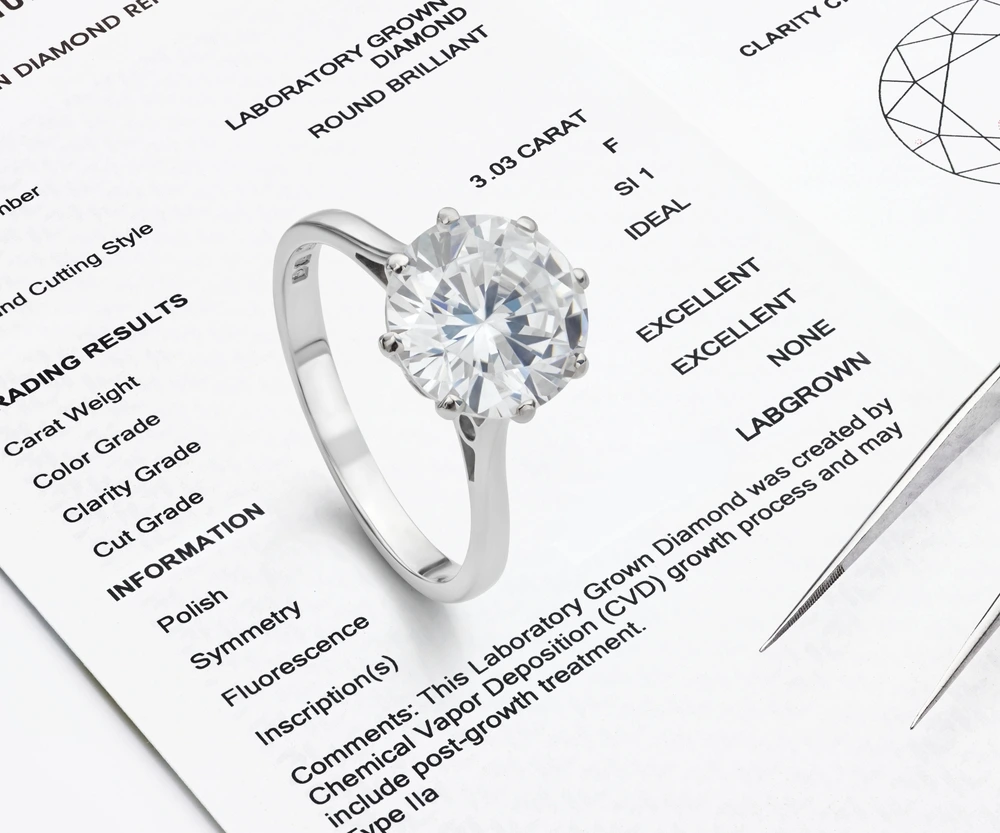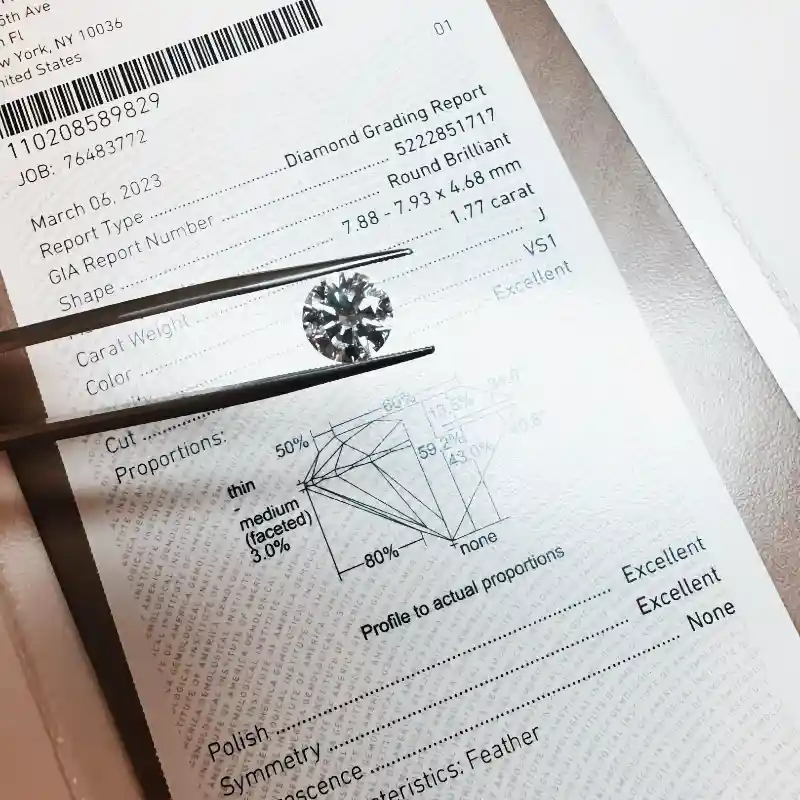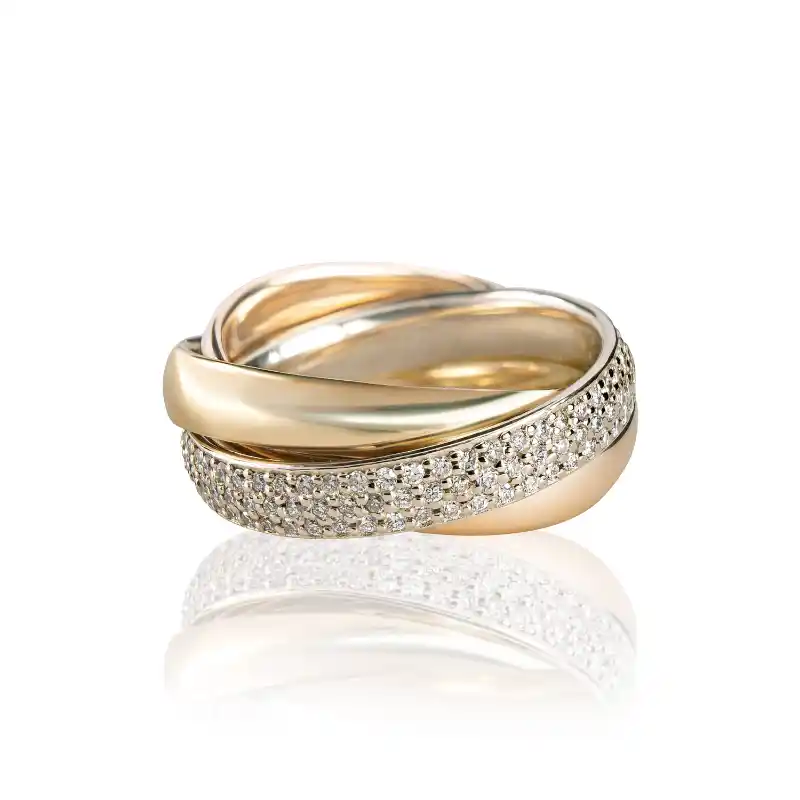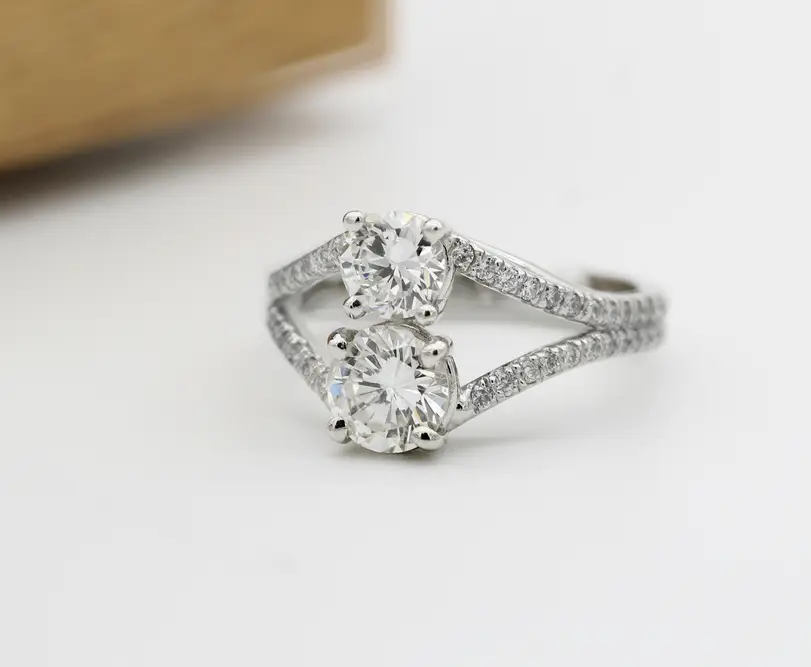
Lab-Grown Diamonds: Will Sales Growth Lead To A Consumer Backlash?
Lab-grown diamonds have experienced a surge in popularity, attracting consumers with their affordability and perceived eco-friendliness as an alternative to mined diamonds. As production costs continue to decline and more producers enter the market, the prices of lab-grown diamonds have dropped significantly. However, this downward trend raises concerns about whether lab-grown diamonds will face a backlash from both the trade and consumers as their prices plummet. In this article, we will explore the factors that could potentially lead to a consumer backlash against lab-grown diamonds and discuss the potential positive impact on the recycled diamond market.
Undermining Consumer Confidence
One significant factor that may contribute to a backlash against lab-grown diamonds is the rapid decline in prices. While affordability has been a major draw for consumers, the perception of value plays a crucial role in their purchasing decisions. As the prices of lab-grown diamonds continue to drop, some consumers may question the long-term value and desirability of these stones. This skepticism may lead to a preference for natural diamonds or recycled diamonds, which are perceived as more stable investments.
When purchasing jewelry, especially engagement rings or other sentimental pieces, buyers often attach emotional significance to the gesture. These purchases are often seen as symbols of love and commitment, where the price is often associated with the level of dedication and sentiment behind the gift. Therefore, if the prices of lab-grown diamonds drop too quickly, some consumers may interpret it as an indication of being "cheap" or not valuing the significance of the purchase.
In many cultures, the tradition of giving a diamond ring is deeply rooted, and the perception of diamonds as timeless and valuable adds to their allure. Lab-grown diamonds, while indistinguishable from natural diamonds in terms of appearance and chemical composition, may still face stigmas associated with being man-made. Some buyers may perceive lab-grown diamonds as lacking the uniqueness and romanticism associated with natural diamonds, further fueling concerns about their value.
Additionally, the lowering of prices may also raise questions about the quality and durability of lab-grown diamonds. Consumers might wonder if the lower prices reflect a compromise in the craftsmanship or materials used. The perception of lab-grown diamonds as less valuable than natural diamonds may overshadow their positive attributes, such as being eco-friendly and ethically sourced.
Natural diamonds, known for their rarity and timeless appeal, have long held a special place in the hearts of consumers. The allure of owning a diamond that has been formed over millions of years adds to its perceived value. Similarly, recycled diamonds provide an ethical and sustainable choice, as they reduce the demand for newly mined stones. The stability and timeless appeal of both natural and recycled diamonds may overshadow the allure of lab-grown diamonds, especially as their prices continue to decline rapidly.
Environmental Concerns
Lab-grown diamonds are often marketed as a sustainable and environmentally friendly choice compared to mined diamonds. However, there are several factors to consider that challenge the notion that lab-grown diamonds are truly eco-friendly.
Firstly, the energy-intensive process of creating lab-grown diamonds raises concerns about their carbon footprint. The production of lab-grown diamonds requires significant amounts of electricity, usually sourced from conventional power grids that rely on fossil fuels. The energy consumption during the diamond-growing process contributes to greenhouse gas emissions, which can have a negative impact on the environment and contribute to climate change.
Furthermore, lab-grown diamonds rely on the use of chemicals and materials that may have environmental implications. The diamond-growing process often involves the use of large amounts of methane or other hydrocarbon gases, which are used as a carbon source. The extraction and production of these gases may have adverse effects on the environment, including air pollution and potential greenhouse gas emissions. As a recent JCK article advises, lab-grown diamonds probably shouldn't be classified as ‘mining free’.
Another important consideration is the water usage associated with lab-grown diamond production. The diamond-growing process requires water for cooling and as a medium for the chemical reactions involved. Water scarcity is a significant global concern, and the excessive use of water in lab-grown diamond production can contribute to this issue.
Additionally, the disposal of lab-grown diamonds at the end of their lifecycle poses environmental challenges. Like any other product, lab-grown diamonds have a limited lifespan and may eventually be discarded. The proper recycling or disposal of lab-grown diamonds is essential to minimize their environmental impact, but currently, there is limited infrastructure in place to handle the recycling of these synthetic stones.
While lab-grown diamonds may avoid the ethical concerns associated with mining, such as human rights violations and unethical labor practices, their environmental impact should not be overlooked. It is important for consumers to critically assess the sustainability claims surrounding lab-grown diamonds and consider the complete lifecycle of these stones.
To make a truly environmentally friendly choice, consumers may explore other options such as recycled diamonds, which minimize the demand for new diamond production, or lab-grown diamonds produced using renewable energy sources. These alternatives can help consumers align their purchasing decisions with their sustainability values while being mindful of the potential environmental impacts of lab-grown diamonds.

Oversupply Concerns
Another potential factor that could trigger a consumer backlash against lab-grown diamonds is the proliferation of producers, leading to an oversupply in the market. As more companies enter the lab-grown diamond industry, competition intensifies, potentially driving prices even lower. The oversaturation of lab-grown diamonds in the market may diminish their perceived scarcity and exclusivity, thereby raising concerns about their long-term value.
Consumers who view diamonds as investments might worry that the oversupply of lab-grown diamonds could lead to a depreciation in their value over time. Unlike natural diamonds, which have a limited supply due to their geological formation, lab-grown diamonds can be produced in larger quantities. This abundance may create a perception of reduced value among consumers, as scarcity has traditionally been associated with higher worth.
Resale Concerns
Another issue for consumers is the almost non-existent resale market for lab-grown diamond. Despite their rising demand they lack significant resale value, unlike their natural counterparts. This is primarily due to the limitless supply of lab-grown diamonds, as they are manufactured artificially, driving down their prices. Conversely, natural diamonds have a limited supply, bolstering their resale value. Furthermore, the production cost of lab-grown diamonds continues to decrease with technological advancements, contributing to their decreasing market value. Consumers are becoming aware that while lab-grown diamonds may be more budget-friendly initially, they lose much of their worth over time. We discuss this in more depth in an article entitled “Lab Grown Vs Natural Diamond, One Has Resale Value, The Other Does Not.”
The Potential Impact On The Recycled Diamond Market
Interestingly, the continued growth of the lab-grown diamond market could have a positive impact on the recycled diamond market. As lab-grown diamonds become more prevalent, consumers may become more discerning about the origins of their diamonds and opt for recycled diamonds as a way to support sustainable practices. Recycled diamonds are sourced from previously owned jewelry, reducing the demand for newly mined or lab-grown stones.
By choosing recycled diamonds, consumers align their values with sustainability while avoiding the potential pitfalls associated with lab-grown stones. These consumers appreciate the story behind recycled diamonds and the fact that they are giving new life to existing diamonds, minimizing their environmental impact.
Final Thoughts
The rise in popularity of lab-grown diamonds brings with it the potential for a consumer backlash. The rapid decline in prices may undermine consumer confidence in the value of lab-grown diamonds, leading to a preference for natural or recycled diamonds seen as more stable investments. The oversupply resulting from an increase in lab-grown diamond producers may exacerbate concerns about their long-term value. These trends also create opportunities for the recycled diamond market as consumers become more conscious of sustainability. By understanding these factors, consumers will be able to make informed decisions about what type of product they want to invest in or gift to the special people in their lives.














